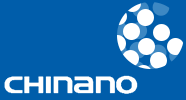Since nanoimprinting technology was invented in 1995, it has experienced more than 20 years history of technological development. Because of its excellent technical characteristics: high resolution, low cost, and high productivity, it was considered a star technology at the beginning of its birth. It is rated as "one of 10 emerging technologies that will change the world (MIT Technology Review). It has received extensive attention from academia and industry and has even been included in the international semiconductor industry technology development blueprint.
With the developing of Nanoimprint technology, increasingly importance has been attached to its unique advantages and significance in China. Almost all well-known research institutes as well as micro- and nano processing platforms at Universities, have installed nanoimprint equipment. Early adopters in China were for example Peking University, Tsinghua University, Shanghai Jiaotong University, Fudan University, University of Science and Technology of China and many institutes of the Chinese Academy of Sciences. In addition, even some famous Universities have installed multiple sets of nanoimprint equipment. According to unofficial statistics, there are currently more than 100 sets of nanoimprinting equipment installed across China, and hundreds of research groups and project groups are working on or have studied topics related to nanoimprinting technology.
The development of nanoimprint technology is not only the result of the development from academia, but also a huge contribution from the industry. While receiving extensive attention in the academic field, nanoimprint technology has also begun to enter the industrial market. The continued development of nanoimprint technology and the commercialization of the same has been driven by key players such as Nanonex, Obducat and Molecular Imprint. who have all made great contributions to the nanoimprint technology. In the later period, Suss Microtec and EVG also made a lot of contributions to the industrialization of nanoimprint technology.
Especially in recent years, the demand in China for capabilities such as large-volume, high-precision micro- and nano processing in the industry, has begun to explode. The demand is present in many application areas including micro- and nano optical components, AR lenses, DOE, TOF and MLA. Also within biomedical applications such as biochips, microfluidic channels, microneedles, are potential areas of use for nanoimprint technology. A large number of high-tech start-up companies have appeared in these fields and some large listed companies have also begun to deploy nanoimprint technology and they are investing huge amounts of funds and resources. Domestic nanoimprint technology companies have also contributed tremendous efforts to it. SVG was established in 2001, Wuxi Imprint was established in 2008, Suzhou Gdnano in 2012, and the latest entrants to the industry are Qingdao GermanLitho, Shanghai Amis NIL,Hangzhou EurOptics, Xi'an Huatian Huichuang who are actively pushing the industrialization of nanoimprint technology to a new level in China.
However, up until today, there are no professional conferences to academic exchange covering the topic of nanoimprint technology in China, and even branches of related academic conferences are rare. By comparison, overseas related academic events started much earlier, for example the EIPBN conference in the United States, the MNE conference in Europe, and the MNC conference in Japan, began to have nanoimprint technology sub-section since the early stages of the nanoimprint technology. The first NNT conference in 2002, all engineers and scientists from the field of nanoimprint technology have their own annual nanoimprint conference, which continues to this day.
Under such new situation, the Gusu Lab, in conjunction with Suzhou Nano Technology Development Co., Ltd., INL, Obducat, etc., will regularly organize NTAC-Global Nanoimprint Technology and Application Conference in Suzhou, aiming to provide a long-term and stable communication platform for the research and engineering community committed to nanoimprint technology development. Furthermore, NTAC target to gather global nanoimprint technology industrial resources to create a global leading conference in the nanoimprinting field, to promote the aggregation of talents, the technological innovation and the achievement transformation from nanoimprinting technology to industry, and to accelerate the breakthrough of the development bottleneck in the nanoimprinting technology manufacturing field.
Biography: Andrea Kneidinger is Business Development Manager at EV Group, where she focuses on Micro- and Nanoimprint Lithography for a variety of applications, in particular nanophotonics and wafer level optics.Andrea received the master´s degree (M.Eng) from the Deggendorf Institute of Technology and Budapest University of Technology and Economics where she studied "Technology and Innovation Management". She has several years of professional experience in electrical engineering as well as product management - especially in materials, optics and photonics.
Abstract: Wafer-level nanoimprint lithography (NIL) has increasingly become a key enabling technology supporting new devices and applications across the photonic industry. Leading manufacturers of optical sensors, augmented reality (AR) devices and biomedical chips are already utilizing NIL and realizing the benefits of this technology, including the ability to cost-effectively mass manufacture micro- and nano-scale structures.









